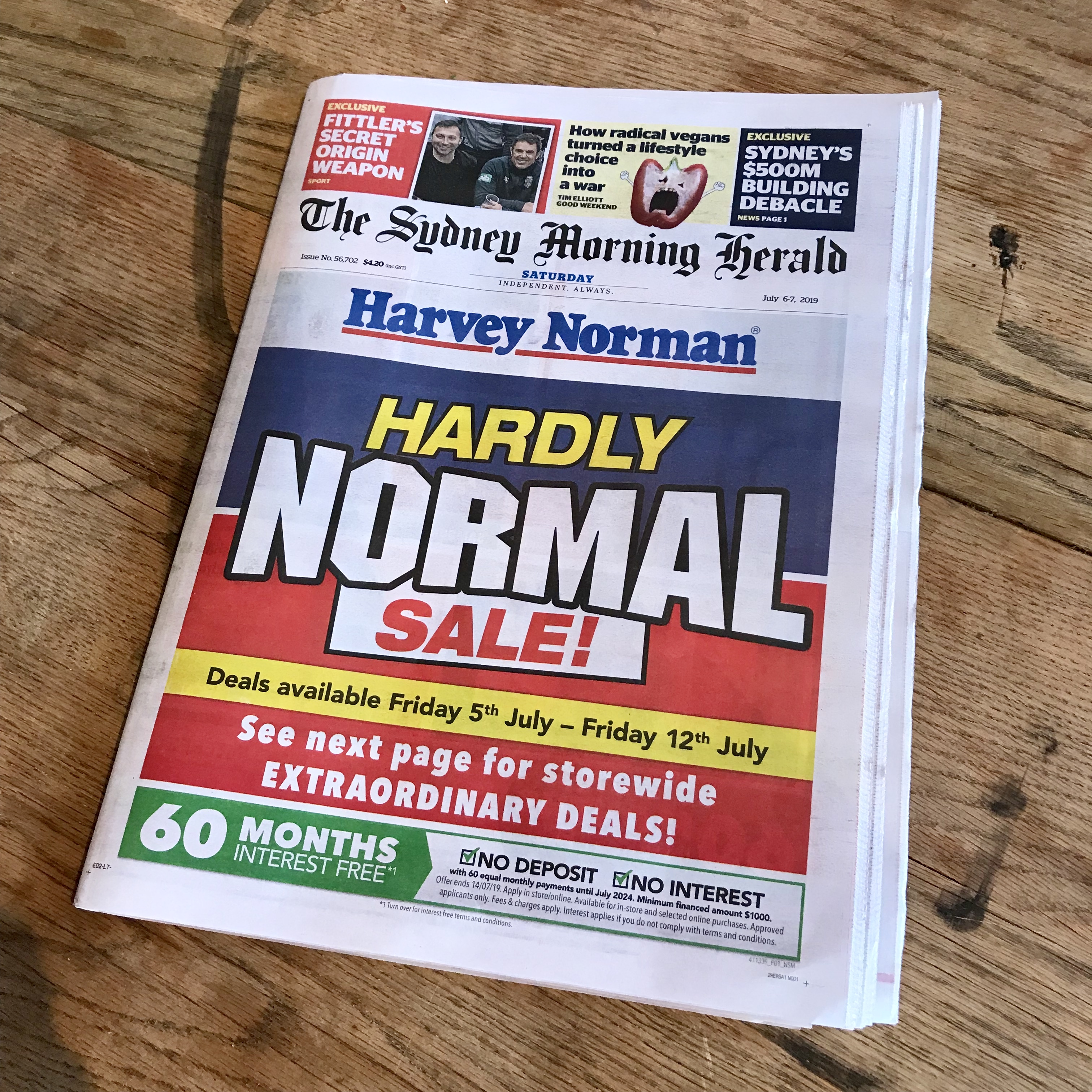
We all know that newspapers are experiencing a slow and painful death. Some have made a somewhat successful transition to online subscription models, whilst others struggle to maintain readership as people follow stories on Facebook… shudder.
On the weekend, I spotted this Saturday issue of The Sydney Morning Herald (SMH) at a restaurant. Yes, this was the front page.

Not a major story, not an engaging photograph of an important event… instead, we see a gigantic, front-page ad for Harvey Norman’s Hardly Normal sale. I’m aware that newspapers often have a ‘real’ front page inside the cover these days, however I find this to be unacceptable for such a prominent Australian news publication.
The dependence on such a large ad for revenue is an obvious sign of the struggle that newspapers now face, however I would also attribute this to the merger of Fairfax (publisher of SMH, The Age and more) with the Nine Network, which is a commercial television and news company in Australia. When this sale occurred, many Australians regarded it as the purchase of one corporate turkey by another, not unlike the doomed purchase of Nokia by Microsoft. Here’s an explanation of how the merger worked, from SMH itself.
To me, this over-reliance on traditional advertising is a sign that such companies deserve to be disrupted. I don’t wish for journalists and other media employees to suffer—I have long enjoyed the news that comes out of SMH—however at this point Nine and Fairfax are the architects of their own demise. Rather than rethink or revolutionise the way that they operate, they continue to shove useless advertising in front of their readers and viewers. What’s the result? We end up seeing users flock to sites like Facebook to get their media or companies like Apple having to bail them out with services like Apple News. Whilst a great avenue for consumers to get to ‘real’ news, services like Apple News do offer a somewhat restrictive revenue model for publishers.
We all know that publishers and networks like these are on the way out. The only question is: how long will it take until they’re finally dead? With hardly normal strategies like this, I’d bet that it’s even sooner than we think.